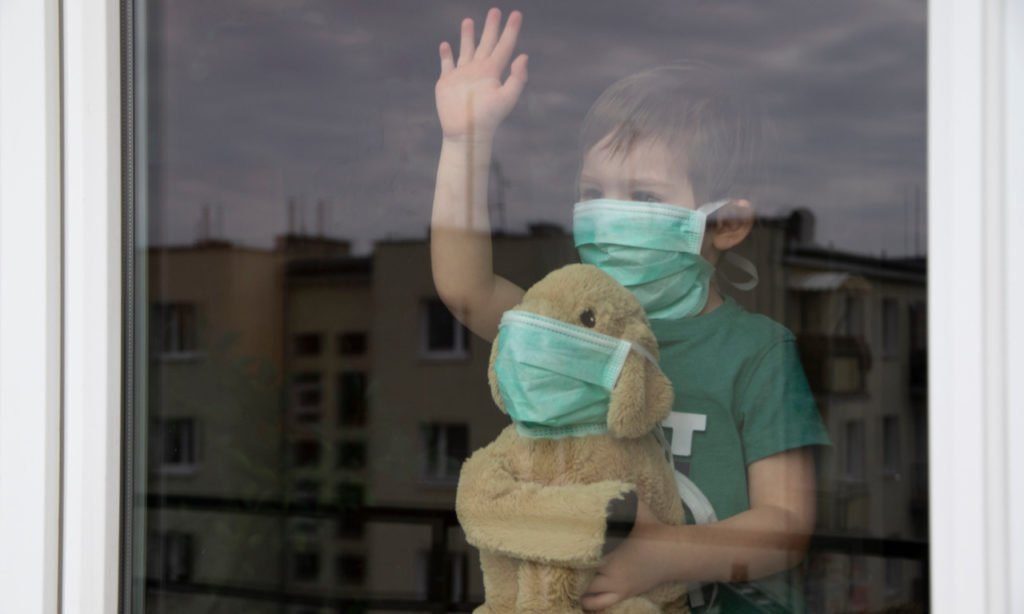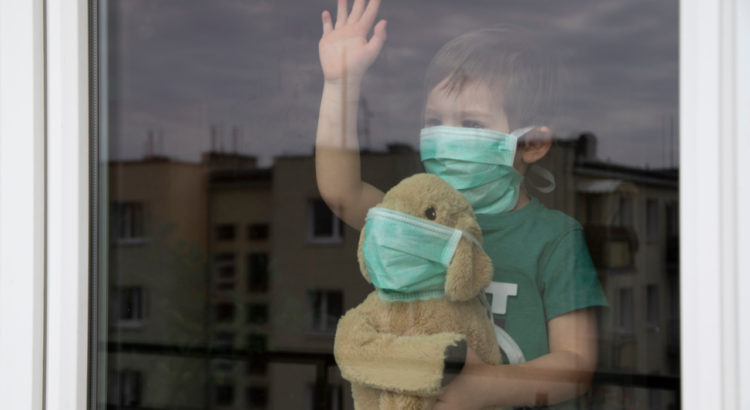
Ineffectual & psychologically malignant


“Whilst masks are a successful psychological tool to remind the public to remain alert, they are not effective in preventing the community spread of disease.“
In March 2021, HART published a review of the evidence for the effectiveness of masks in reducing the transmission of respiratory viruses, and highlighted the potential negative consequences (physical, social and psychological) of requiring healthy people to cover their faces in community settings. The conclusion was that masks do more harm than good. Over 12 months later, this extended update of the relevant science draws a similar conclusion.
Prior to June 2020, public health organisations, and their experts, did not endorse masking healthy people in the community as a means of reducing viral transmission.
In an interview on March 2020, Dr Jenny Harries (England’s Deputy Chief Medical Officer) said that, ‘For the average member of the public’ masks ‘are really not a good idea’ and that ‘people can put themselves at more risk than less’. Professor Jason Leitch (Scotland’s Clinical Director) in April 2020 made the unequivocal statement that, ‘The global evidence is masks in the general population don’t work’. Other senior health officials – including Professor Chris Whitty, Sir Patrick Vallance and Matt Hancock – have made similar comments.
The World Health Organisation (WHO), in their 2019 review of non-drug interventions to manage a pandemic, did not recommend face masks for healthy people. As recently as December 2020, in a WHO document titled ‘Mask use in the context of COVID-19’, it is stated that, ‘There is only limited and inconsistent scientific evidence to support the effectiveness of masking healthy people in the community’. Given these statements it is unclear as to why the WHO changed their advice in the summer of 2020, although according to a Newsnight report it may have been in response to political lobbying.
Is there any evidence that masks reduce viral transmission?
As SARS-CoV-2 is a respiratory virus, spread via the breath of one person to another, it is plausible that a physical barrier covering the nose and mouth could provide a degree of protection. And there is some evidence to support this common-sense assumption.
One research review published in the Lancet concluded that face masks, particularly the medical-quality type, ‘could result in a large reduction in infections’. Several other studies – including this Canadian report – have argued that infection and/or death rates have been significantly lower in countries or regions with mask mandates compared to those without. The authors of another review of both randomised control trials (RCTs – that provide the most robust type of evidence) and (the less reliable) observational studies came to the opinion that the former underestimated the benefit of masks while the latter overestimated it, their overall conclusion being that face coverings achieved a 6% to 15% reduction in disease transmission.
More recently, a randomised controlled study in Bangladesh reported a small reduction in general levels of community covid-19 infection when more people wore masks, and extrapolated this finding to claim that – if everybody wore one – there would be a 36% reduction. And researchers at the Indian Institute of Science, after conducting an investigation of the effectiveness of various types of mask in blocking synthetic droplets, suggested that three-layer cloth masks could reduce SARS-CoV-2 transmission.
However, these studies in support of mask wearing have attracted wide-ranging criticism. The weaknesses highlighted have included: poor methodology; a focus on hospital transmission rather than community transmission; a failure to account for the natural ebb and flow of infection rates; and a reliance on laboratory-based findings rather than those in real-world settings. Also, the studies comparing different geographical areas (masked versus non-masked) are open to the accusation of cherry-picking, as there are at least as many regions where infection rates increased after the introduction of a mask mandate. The UK is one example, and many others have been highlighted in a global review (Miller, 2022) of the timing of mask mandates and covid-19 peaks and troughs.
In addition, the Bangladesh trial was essentially an exploration of the impact of a wider public health and mask promotion campaign, and did not specifically address the potential effectiveness of mask wearing per se. Thus, the marginal reduction in reported covid-19 infections in the intervention group (absolute reduction of 1%) could plausibly have been the result of changes in other aspects of the participants’ behaviour, such as a greater inclination to stay at home when ill.
Is there evidence that masks are ineffective in reducing viral transmission?
A wealth of empirical evidence has accumulated in support of the premise that masking healthy people in community settings achieves no substantial reduction in levels of respiratory-virus transmission.
With regards to RCTs – the most robust type of evidence – a review of 14 such studies into the spread of influenza found that masks led to no significant reduction in risk of infection for neither the wearer nor others. As for the SARS-CoV-2 virus, a large RCT (often referred to as the ‘Danish mask study’), using appropriately-fitted and high-quality surgical masks, failed to realise any significant benefit for the wearer.
Multiple real-world comparisons of masked and unmasked geographical regions, have not delivered consistent support for the benefits of face coverings. There have been many regions where recorded infection rates were higher in areas with mask mandates as compared to those without, such as shown in this comparison of Scottish and English schools during the autumn 2021 term and a pre-post mandate comparison in Texas. Furthermore, a Spanish study evaluating the impact of mask requirements on primary schools concluded they had no significant effect on rates of viral transmission, and another investigation found that American states with compulsory-mask regulations did not realise significantly lower rates of viral transmission than states that did without such mandates. Also, a recent Spanish study that examined over 300 people with covid-19 observed no association between risk of transmission and reported mask usage by their contacts.
Comprehensive reviews of all mask literature – incorporating those studies that suggest masks might achieve some benefits – have drawn the same overarching conclusion: masking the healthy is of no appreciable value. Thus, one detailed analysis formed the view that there is ‘little to no evidence’ that cloth masks in the general population are effective in reducing the transmission of respiratory viruses, while another review, conducted by the Cato Institute, concluded that a large volume of low-to-medium quality evidence had ‘largely failed to demonstrate their value in most settings’.
There are three plausible reasons why masking healthy people in the community is ineffective in reducing the transmission of respiratory viruses. First, the concern that those without symptoms will spread the SARS-CoV-2 virus – an argument commonly given to justify the blanket wearing of face coverings – has been inflated, based primarily on anecdotal reports from China in the early stages of the pandemic. If such asymptomatic transmission occurs it is likely to be rare and contribute little to the propagation of a pandemic. There is more robust research suggesting that pre-symptomatic transmission (viral transmission 1-3 days before development of symptoms) may be more significant but in one study it accounted for less than 7% of cases.
Second, the virus is mainly spread by microscopic aerosols – not larger droplets – the former being far too small for masks to act as a barrier. Expert scientists have argued – despite some recent concerted efforts to censor their views – that cloth face coverings contain perforations that are far too big to act as a viral blockade and therefore ‘offer zero protection’. Furthermore, one study concluded that cloth face coverings can amplify the spread of infectious particles by acting as a ‘microniser’ transforming large droplets, which would ordinarily fall to the ground close to the person, into smaller, truly airborne ones.
Third, it is inevitable that the majority of laypeople wear ill-fitting face coverings that are often improperly stored, frequently touched and rarely washed (cloth) or appropriately disposed of (plastic), creating even more problems.
The potential harms of wearing masks
The negative consequences of healthy people routinely wearing a mask can be grouped under three headings: physical; social/psychological; and environmental.
Physical harms
In the Western world, the widespread masking of healthy people is a recent phenomenon and, as such, research into the potential harms is in its infancy. There are a lot of unknowns, particularly with regards to the impact of long-term wear on children. Nonetheless, there is accumulating evidence face coverings may be associated with the following physical health risks:
Respiratory illness/pneumonia – with the risk of bacterial infections increasing after only four hours of wear
Reduced heart & lung efficiency
Exposure to contaminants in the textiles – including titanium oxide – and the risk that micro-plastics might find their way into lung tissue
Increased risk of falls in the elderly
Social & psychological harms
Whereas the physical harms of masks, at least in the short term, can often be categorised as mild to moderate irritants, the social and psychological consequences of hiding our faces from other people are profound and ubiquitous. Humans are social animals. We need to interact with others and communicate to sustain our wellbeing. The reactions of the people we meet provide continuous feedback about ourselves and the impact we are having on our fellow citizens. Masks are a major impediment to all these human needs and, as such, they are de-humanising.
More specifically, the social and psychological harms of face coverings include:
Inhibits effective communication – Face coverings discourage all forms of communication, both verbal and non-verbal. The difficulty in determining the emotional status of someone we meet will inhibit any form of shared pleasantry or human connection. In hospital settings, mask-induced communication errors can occasionally be catastrophic.
Impedes children’s social development – Face-to-face interactions, and positive attachments to adult care givers, are essential for a child’s social development. Masks deny children access to facial expressions, a rich source of information crucial for their psychological maturation and the growth of emotional intelligence. Disturbingly, an Ofsted report, published in April 2022, described the negative impact of covid-19 restrictions on children, highlighting their inability to understand facial expressions.
Maintains elevated levels of fear – Acting as a crude, highly visible reminder that danger is all around, face coverings are fuelling widespread anxiety. Fear is underpinned by a perception of threat and being masked is a blatant indicator that we are all bio-hazards. At the start of the covid-19 crisis, fear was strategically increased on the recommendation of the Government’s behavioural scientists as a means of promoting compliance with the restrictions. Unfortunately, the resultant inflated fear levels have discouraged people from seeking help with non-covid illnesses and are likely to have significantly contributed to the tens of thousands of non-covid excess deaths that have occurred in private homes. Masking will maintain this elevated level of fear and thereby could be contributing to this tragic loss of life. And – contrary to a commonly expressed view – masks will not, in the medium-to-long term, provide reassurance to encourage people to return to a normal lifestyle; by preventing disconfirmation of anxiety-laden beliefs, habitual masking will act as a ‘safety behaviour’, thereby prolonging the wearers’ heightened anxieties.
Excludes the hard of hearing – Masks will impede communication with the hard of hearing – who to varying degrees depend on lip reading – so that many are effectively excluded from the conversation. This could amount to around 1-in-6 of the UK population who are prevented from engaging fully in social interaction with their peers.
Promotes mindless compliance – As previously discussed, the scientific evidence that masking the healthy reduces viral transmission is, at best, weak and contradictory. The decision by public health experts to mandate them is likely to have been influenced by the potential effectiveness of masks as a compliance device to increase adherence to coronavirus restrictions. We are strongly influenced by what others do, and masks enable easy identification of the rule followers and the rule breakers, thus bringing ‘normative pressure’ to bear on the miscreants to unthinkingly conform. (A recent book, A State of Fear by Laura Dodsworth, lends support to this idea that masks are a tool to promote compliance, a Government advisor informing her that psychologists on the behavioural science subgroup of SAGE liked them because ‘they conveyed a message of solidarity’).
Reduces concentration & impairs learning – Keeping children on task in the classroom is likely to be more difficult when they are masked.
Aggravates existing anxiety problems/ re-traumatises – Wearing a mask will heighten the distress of many people with existing mental health problems and may trigger ‘flashbacks’ for those historically traumatised by physical and/or sexual abuse. Many people already tormented by recurrent panic attacks, involving catastrophic thoughts of imminent death and feelings of breathlessness, will find masks very difficult to tolerate. Regrettably, exercising their legal right to go out without a face covering can attract harassment and victimisation.
Barriers to talking therapies – Facial expressions and other forms of non-verbal communication are vital for the development of a therapeutic relationship, one based on trust, empathy and compassion; in the absence of such a relationship, psychological therapy is rendered ineffective. Although the impact of ‘COVID-safe’ environments on the effectiveness of professional help for people with mental health problems is unknown, masks might be especially problematic.
Enables criminals to evade identification – Unsurprisingly, there have been reports that widespread mask wearing is making it more difficult for police forces to identify crime suspects.
Environmental harms
Numerous discarded face masks litter our streets, as a brief walk in any neighbourhood will confirm. Concern is rising about the environmental damage likely to result from this new major source of pollutants.
Disposable face masks are typically made of non-recyclable plastic. It has been estimated that, each day in the UK, 53 million masks are being sent to landfill waste sites, with many more reaching our rivers and oceans. Data from 11 countries indicated an 84-fold increase in mask littering.
Scientists are particularly worried about the dangerous chemicals emitted when masks find their way into our waterways. One study detected a range of potential toxins following emergence in water, including plastic fibres, silicon, poly-ethylene glycol, cadmium, copper and antimony.
In summary:
When public health interventions are being considered for healthy populations, such as screening programmes and vaccinations, a high evidential bar is usually required in two areas. Firstly, high quality studies (RCTs) that provide reliable evidence of the extent of both the beneficial effect of the intervention and the frequency and severity of side effects. Secondly, a substantial net benefit (beneficial effect minus side effects). The evidence that masks reduce viral transmission (beneficial effect) is weak and contradictory, while there is better-quality research to support the conclusion that they do not significantly decrease the risk of respiratory infections in real-world settings. Although generally under-investigated, there is accumulating evidence that masking healthy people, particularly for long periods of time, can cause a range of physical harms. More importantly, face coverings are associated with profound social and psychological consequences, with fear maintenance and the impairment of children’s social and emotional development being the most concerning side effects.
Therefore it is clear that masking healthy people does not come near to the high evidentiary bar needed to recommend them for widespread use in the community – neither in terms of sufficient reliable high quality evidence on benefits and side effects, nor in terms of substantial net benefit. On the contrary, they appear to do more harm than good.

